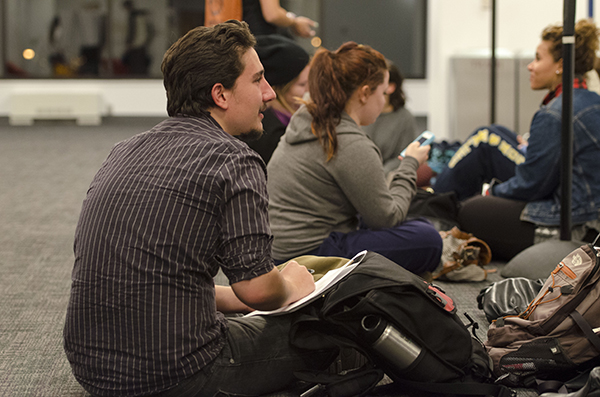
On election day, SUNY New Paltz students voting on campus waited in line for hours. In response to this problem Sen. Roberto LoBianco is drafting a statement to the Ulster County Board of Elections with the help of the New York Public Image Research Group (NYPIRG) to express the students’ disappointment with the situation.
“This is a fundamental issue across the New York State,” LoBianco said. “The issue of our voting system being flawed and not allowing people to properly engage with that system is wide-spread and we just got a small taste of that here in New Paltz.”
LoBianco said he did not vote on campus, but he heard his friends say they were waiting on line for three to four hours. He said the situation was due to the Ulster County Board of Elections’ decision to allocate limited resources such as only two polling workers, two voting rosters and one voting machine knowing the amount of students who were registered to vote.
LoBianco said other SUNY campuses had similar problems. He said while New Paltz suffered from long lines, campuses such as SUNY Albany had long lines and misinformed poll workers making it even more difficult for students to vote.
In an effort to remedy the situation LoBianco and NYPIRG drafted a statement to the Ulster County Board of Elections outlining Student Association (SA) concerns with the voting process and requested that “future elections are conducted in a more efficient, effective and fair manner.”
NYPIRG Intern Kenny Satterlee said the purpose of the statement is to get New Paltz classified as two districts allowing for double the amount of workers and voting booths. He said the final draft was presented to the student senate at their meeting on Tuesday, Nov. 27.
Third-year accounting major Genevieve Lee said she agreed that the campus voting situation should have been arranged better. She said although she lives off campus, many of her friends waited hours to vote and had to skip classes to remain on the line.
“It’s not a smart idea to have only one station, especially when students have classes,” Lee said. “They need to be more considerate.”
In addition to the statement for the board, LoBianco said he hopes to reach some elected officials to highlight the situation.
“People are always talking about the youth vote and wanting support of the students but if we can’t even get out there and vote for them the night of elections, they need to address that fundamental issue,” he said.
LoBianco said he hopes students will write letters to the Board of Elections and local newspapers about the voting situation.
“I think we can expect that the trend in increased youth voters is here to stay,” LoBianco said. “The County Board of Elections should acknowledge that and ensure that students aren’t waiting four hours on line to cast their ballots.”






